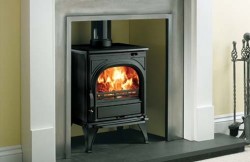As a homeowner, you might dread the arrival of that monthly heating bill. However, you should not become annoyed at the size of that bill. Instead, you ought to get fired up about the many wood burning stoves on the market. Each of those wood stoves can supplement the amount of warmth coming from a home’s central heating. The presence of a supplementary heat source can reduce the size of the home’s utility bill.
Classification of Heat Sources
Not every item that can supplement a home’s central heating has been classified as a wood burner. Some heating units can handle both woody materials and coal. Some furnaces have a chamber in which non-woody items can be consumed. They handle the burning of things like soy beans, corn pellets and liquid made from other grains.
The Noteworthy Brand Names
A stove’s function would seem to be the same as that of a fire, i.e. to warm a room. However, the brand names attached to present day heating units offer something more than that delightful warmth. Some names, like the one linked to the Charnwood Stoves stand for a higher heat output. That increased output has resulted from the introduction of a special plate, one that distributes the flames throughout the stove’s chamber.
All of the Rais Stoves have a cool handle. It never gets hot, regardless of the intensity of the fuel consuming fire. Each of the Clearview Stoves has a large glass window in its door. Each of the Harrie Leenders Stoves displays a distinctive Dutch design. Its stovepipe can enter the ceiling at any point in the room. Some models even have the ability to rotate.
Customers who want to learn more about the above mentioned brands should plan to contact the experts at Bonk and Co. They are ready to share their expertise with both hot and cold customers.

















